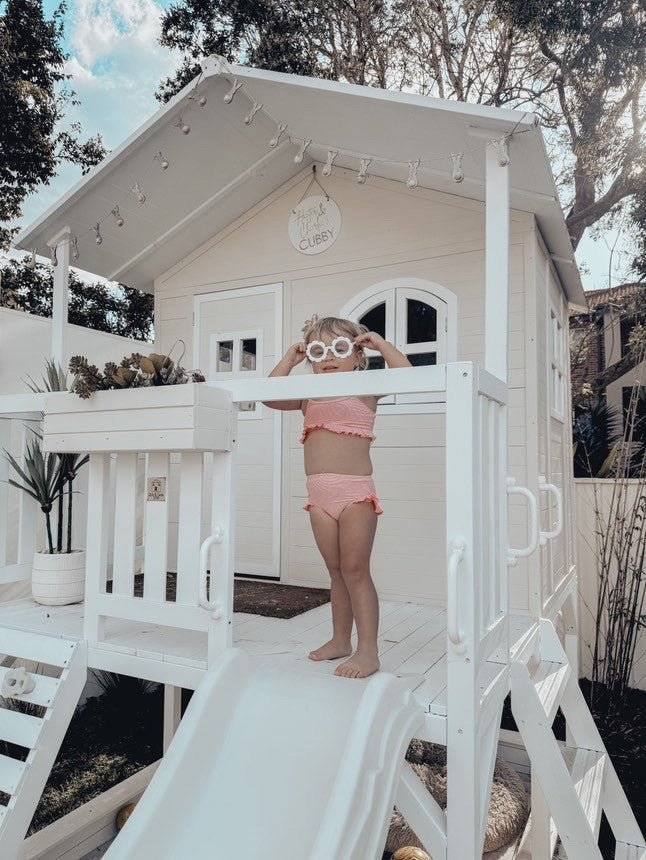
Choosing a Cubby House: A Parent's Guide
Share
Choosing the perfect cubby house for your child can be exciting yet challenging. With so many options available, it’s important to consider materials, design, safety and extra features so you can make the best choice.
Cubby houses offer a safe and imaginative space for children to play and develop social skills. They can transform your backyard into a vibrant play area, encouraging outdoor activity and creativity. Whether you prefer a timber cubby house or a colourful plastic one, there’s something for every taste and budget.
This guide will help you navigate the world of cubby houses—covering types, key features and safety considerations—so you can find the ideal cubby for your family.
Why Choose a Cubby House?
A cubby house creates a private world for kids to explore, fostering creativity and independence. Children learn valuable social skills as they engage in imaginative play with siblings or friends. It also encourages more time outdoors, promoting physical activity and reducing screen time.
- Enhances children’s social and motor skills
- Encourages imaginative play and creativity
- Creates a safe outdoor play environment

Types of Cubby Houses: Materials & Designs
Cubby houses come in many designs and materials, each with unique benefits. Timber cubby houses are popular for their natural look and durability, blending beautifully with garden settings (they may require occasional maintenance). Plastic cubbies are lightweight, easy to move and need minimal upkeep—great for busy families.
Popular design options include:
- Cubby house with slide: adds a fun, active play element.
- Swings & forts: encourage movement and imaginative play.
- Cubby house with sandpit: supports sensory play and tactile exploration.
Key Features to Consider
Focus on features that enhance play and safety. A kids’ cubby house with a slide can provide hours of fun and encourage physical activity. Weather-resistant components help protect the structure and extend its lifespan through rain and strong sun.
- Verandas: shaded areas for rest and pretend play.
- Windows & doors: make the cubby feel more like a “real” house.
- Climbing walls & swings: add adventure and challenge.

Safety & Installation Tips
Prioritise safety to ensure a secure play environment. Check that all edges are smooth and materials non-toxic. An outdoor cubby house should be stable and firmly anchored to the ground.
- Hire professionals for complex setups.
- Follow manufacturer instructions closely.
- Inspect regularly for wear and tear.
Making the Right Choice for Your Family
Consider your child’s interests, the space you have, and your budget. Customisable options can adapt as your child’s needs change. Research and compare models to make an informed decision—then enjoy turning your backyard into a wonderful playground.
